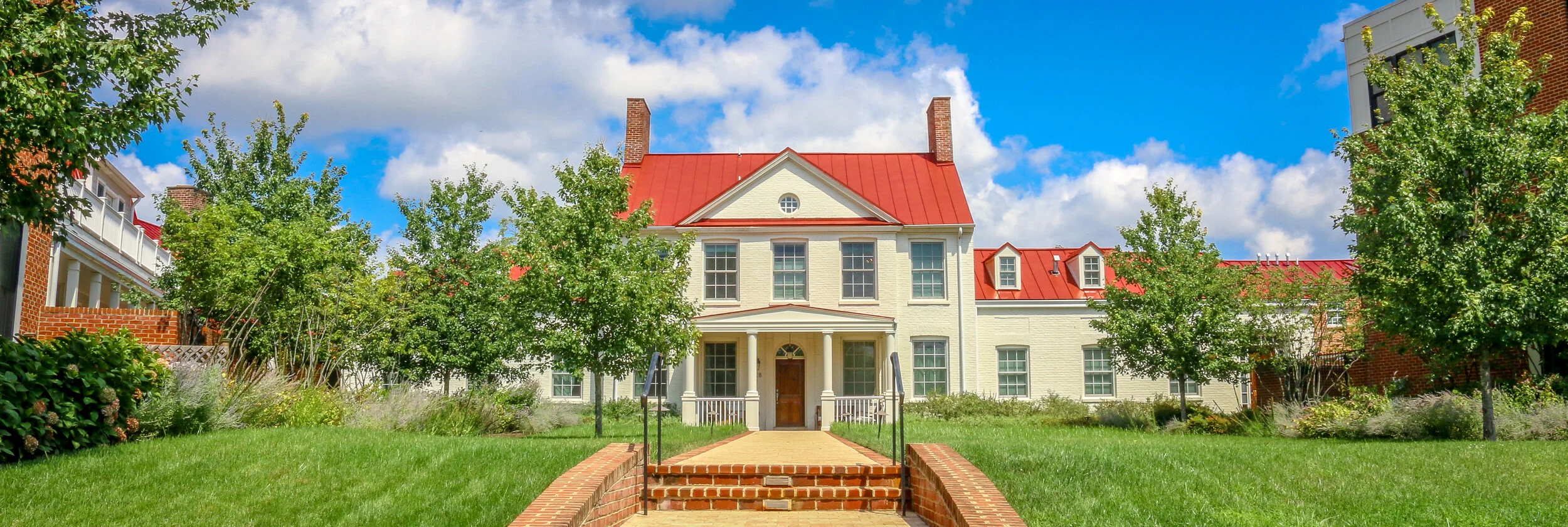The Maples was originally built for Captain William Mayne Duncanson between 1795 and 1796 on property he purchased for $960. The Late Georgian style mansion is the oldest building still standing on Capitol Hill. The two story main house and detached outbuilding which served as slave quarters and a carriage house was designed by architect William Lovering who designed several of the properties I’ve features in this series. During the house’s construction, the captain lived in the Duncanson-Cranch House on N St. SW which was the last property we looked at. George Washington was a dinner guest at The Maples while Duncanson lived there and the president was said to have called it “a fine house in the woods”.
Duncanson’s real estate investments in the city eventually led him into bankruptcy, and he lost this house in the process. It served as a hospital after the Battle of Bladensburg during the War of 1812 and soon thereafter was purchased by recent Star Spangled Banner author and future D.C. District Attorney Francis Scott Key. Interestingly, at the time he purchased The Maples, Key was living at 3518 M St. in Georgetown, a block or so away from the Forrest-Marbury House featured earlier in this series. The Key family likely never lived in The Maples though, except perhaps briefly after selling their Georgetown home in the 1830s.
In 1838 The Maples was purchased by Major Augustus A Nicholson, the Quartermaster of the United States Marine Corps, and became the center of military entertainment in the Capital City. Sadly, Major Nicholson’ wife committed suicide in the house and is said to still haunt the property with her tormented cries.
The Maples changed hands again in 1856, this time bought by Delaware Senator and former U.S. Secretary of State under Zachary Taylor, John M. Clayton. Clayton is one of the two statues placed by Delaware in the Statuary Hall in the U.S. Capitol. He added a magnificent ballroom which was painted by Constantino Brumidi whom we know as the painter of the Apotheosis of George Washington in the Capitol dome.
Two years later, writer and oceanographer Count Louis François de Pourtalès bought The Maples and was said to have sunk a wine cellar 42 feet below ground, a section of the house which nobody can seem to locate today.
Finally, in 1871, the property was purchased by Emily Edson Briggs, the first female press correspondent who had access to the White House and who was allowed into the Congressional Press Gallery. The house stayed in the Briggs family until 1936.
At that time, The Maples was taken over by Friendship House which was to serve as a home and community center for the disadvantaged youth of the city. The property underwent a major renovation under the watchful eye of nationally renowned architect Horace Peaslee. Peaslee is perhaps most famous for designing the Marine Corps/Iwo Jima Memorial in Arlington, but also oversaw the renovations of St. John’s Church on Lafayette Square (the “Church of the Presidents”) and Dunbarton House which will be featured in an upcoming post. He also designed Meridian Hill Park in Adams Morgan. Peaslee added a series of one and two story buildings to the property to better suit its new purpose, but sadly destroyed the ballroom and Brumidi’s artwork in the process.
Between 2012 and 2015, The Maples once again underwent a major renovation, this time to convert the property into 14 condominiums.
The Maples is a fascinating property which has seen so much of our city and our nation’s history pass by its door and through its hallways. While it has changed much since it was built in 1795, it still retains much of its beauty and historic charm. I’m happy to know that it will stand for years to come where it always has, as the oldest building on Capitol Hill.
The Maples is located at 619 D St. SE and is privately owned and not open to the public.The main building is more clearly visible from the South Carolina Ave side where most of these photos were taken.
D.C.’s Oldest Homes was intended to be a single post with an overview of the history of some of the beautiful buildings from the city’s first decade and before. The more I looked at the history of each property, though, the further down the rabbit hole I went. I hope you enjoy this series of brief posts looking at each property individually. All color photos are available for sale and licensing.

